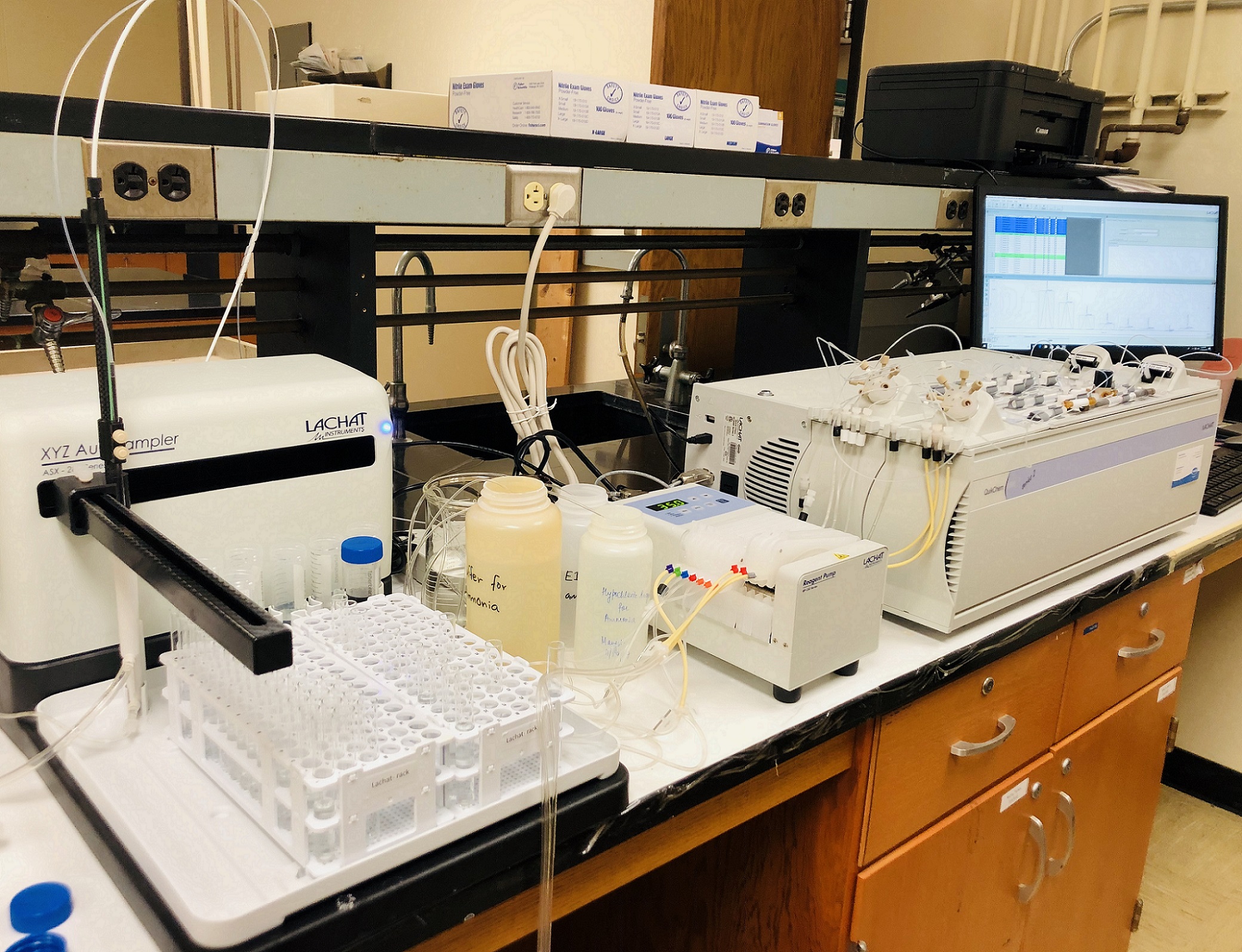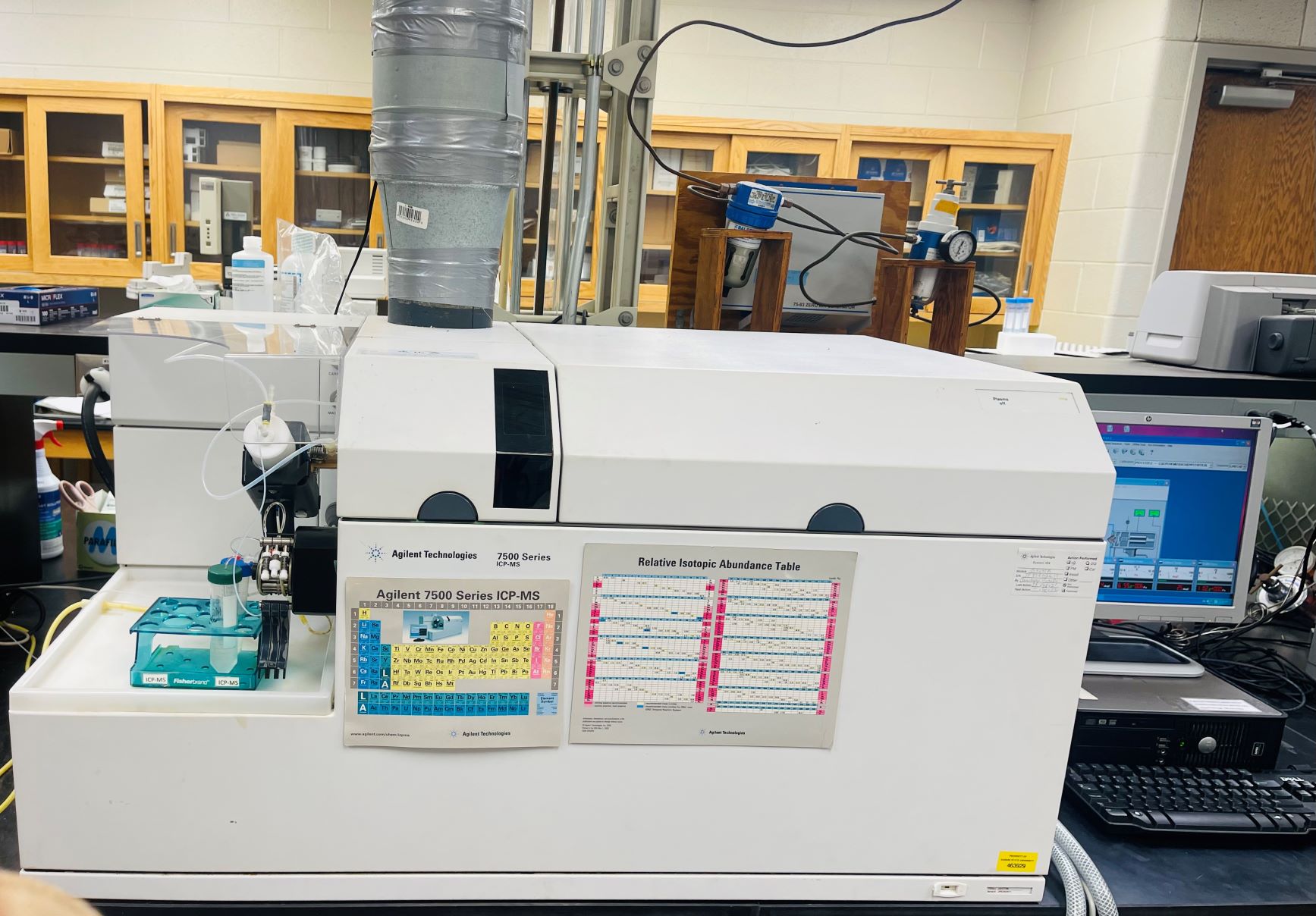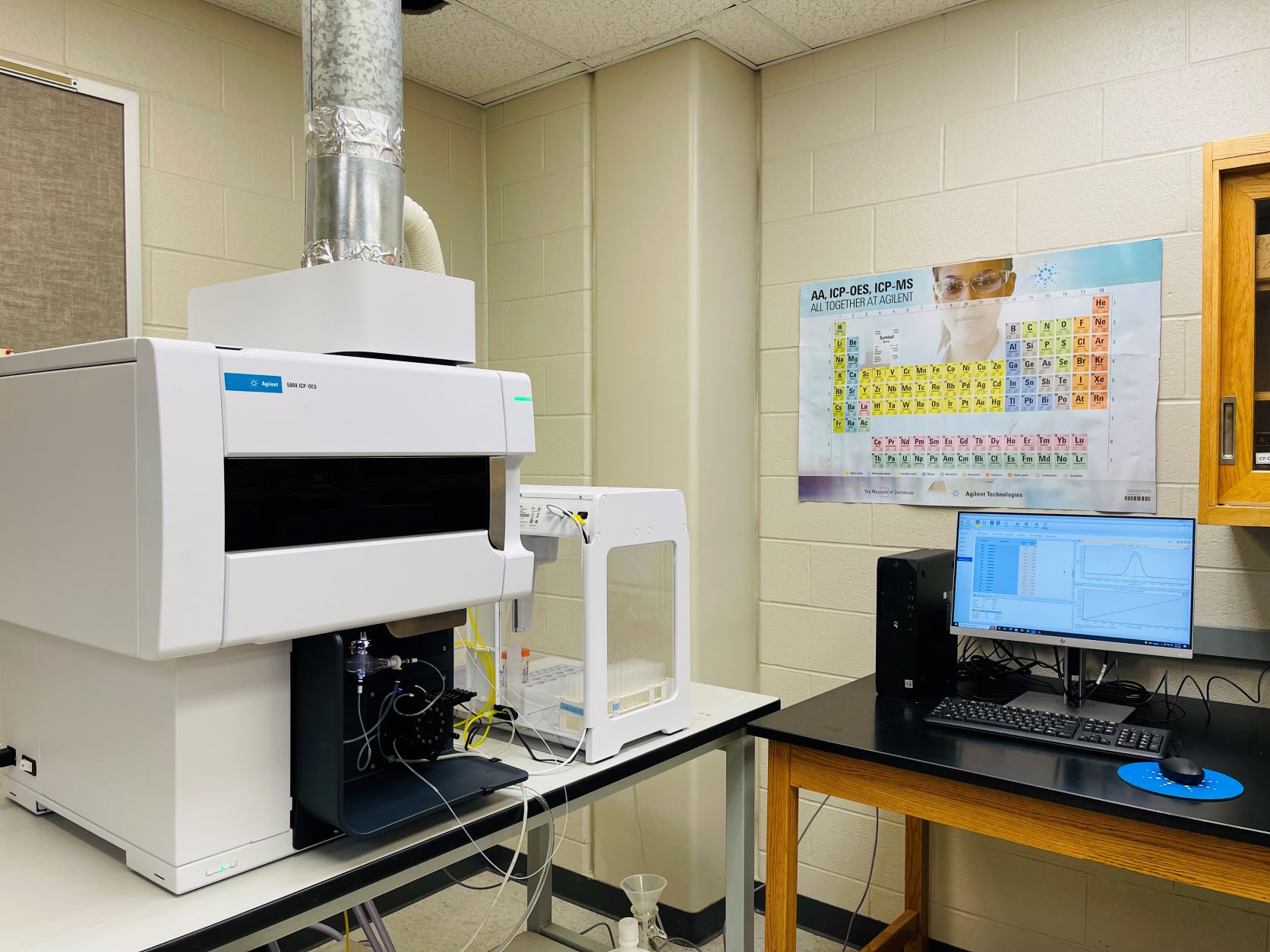Resources/Facilities
Lachat’s Quikchem® 8500 Series 2 Flow Injection Analysis System

This Flow Injection Analysis System is capable of high sample throughput and simple, rapid method changeover. Our system is currently set up to analyze ammonium, phosphate, and nitrate/nitrite concentrations in a variety of sample types. It has a 2-cm flow cell and allows measuring µg/L to percent concentrations.
********************************************************************************
Agilent 7500 Series Inductively Coupled Plasma-Mass Spectrometer

Dedicated for trace element and micronutrient research sample analysis.
A premier technique for trace element analysis. Provides much greater sensitivity than ICP-OES, and far higher sample throughput than sensitive, but slower than GFAAS.
*******************************************************************************
Agilent 5800 Inductively Coupled Plasma-Optical Emission Spectrometer

Agronomy Department property shared with the university soil testing lab and other researchers. The ICP-OES is used mainly for the elemental analysis of soil extracts and digestions. Capable of quantifying multiple elements simultaneously. This instrument is useful for quick determinations at concentrations above 1 mg L-1 (1 part per million).
*******************************************************************************
Varian GTA 120 Graphite Tube Atomizer w/ AA 240Z Zeeman Atomic Absorption Spectrometer

The graphite furnace is utilized for analysis of samples containing elements of interest at the µg L-1 (part per billion) level. This instrument serves mainly to determine lead and arsenic removed from soils and plants by the physiologically based extraction test (PBET) and selenium and arsenic released from constructed wetlands built to treat wastewater produced by flue gas desulfurization.
******************************************************************************
Shimadzu TOC-L Total Organic Carbon Analyzer

Shared by the soil faculty. The TOC-L utilizes a 680⁰C combustion catalytic oxidation method to accurately measure organic carbon content of solutions ranging in concentration from 4 µg L-1 to 30,000 mg L-1.
*******************************************************************************
Leica EM FC7 Cryo-Ultramicrotome

The cryo-ultramicrotome is mainly used to look at soil carbon sequestration under a variety of management strategies. Thin sections for synchrotron based investigations may be prepared using this instrument to preserve the natural integrity of the sample.
*******************************************************************************
Spitzen Analytical Spectrolaser 4000 Target

The Spectrolaser 4000 employs laser induced breakdown spectroscopy to quantify a range of elements in dry soils at a resolution of 10 µm. The main advantage of this instrument over others is the ability to quantify both carbon and nitrogen without extra preparation.
*******************************************************************************
Beckman Coulter DU 800 Spectrophotometer

The DU 800 is used almost exclusively for measurement of available phosphorus in soil. The Hettiarachchi Lab has been heavily involved with studies understanding phosphorus fertilizer fate and transport in the soil.
*******************************************************************************
Niton XL3t Handheld X-ray Fluorescence Analyzer

Sensitive to approximately 10 mg kg-1 . The handheld XRF analyzer makes rapid assessment of soil trace element contamination. This is a quick and efficient method even when high spatial variability is a concern. Analysis takes approximately 2 minutes and can be implemented in situ to simultaneously determine the concentration of~25 elements from sulfur to uranium.
******************************************************************************
ICS-1000 Ion Chromatography System

Ion chromatography is employed to quantify select ions in liquid samples (mainly water).
******************************************************************************
MARS Microwave Digestion System

The MARS microwave digestion unit is utilized to exacerbate the dissolution of metals from soil and plant material into acids for total elemental concentration analysis.
*******************************************************************************
Biosafety cabinet (The “clean room”)

A “clean room” to process plant samples to be analyzed for trace contaminants (dust and dirt do not have a chance to sneak in).
*******************************************************************************
Other accessible resources (on campus)
Agronomy Resources and Facilities
NMR Facility, Department of Chemistry
NMR Laboratory, Kansas State University
Microscopy Facility, Kansas State University
Nanotechnology Innovation Center of Kansas State University (NICKS)
Other accessible resources (outside)
National Synchrotron Light Source (NSLS)